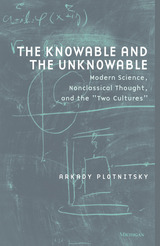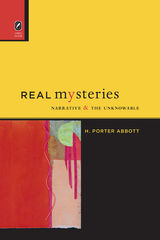2 books about Unknowable

The Knowable and the Unknowable
Modern Science, Nonclassical Thought, and the "Two Cultures"
Arkady Plotnitsky
University of Michigan Press, 2002
This book investigates the relationships between modern mathematics and science (in particular, quantum mechanics) and the mode of theorizing that Arkady Plotnitsky defines as "nonclassical" and identifies in the work of Bohr, Heisenberg, Lacan, and Derrida. Plotinsky argues that their scientific and philosophical works radically redefined the nature and scope of our knowledge. Building upon their ideas, the book finds a new, nonclassical character in the "dream of great interconnections" Bohr described, thereby engaging with recent debates about the "two cultures" (the humanities and the sciences).
Plotnitsky highlights those points at which the known gives way to the unknown (and unknowable). These points are significant, he argues, because they push the boundaries of thought and challenge the boundaries of disciplinarity. One of the book's most interesting observations is that key figures in science, in order to push toward a framing of the unknown, actually retreated into a conservative disciplinarity. Plotnitsky's informed, interdisciplinary approach is more productive than the disparaging attacks on postmodernism or scientism that have hitherto characterized this discourse.
Arkady Plotnitsky is Professor of English and Director, Theory and Cultural Studies Program, Purdue University. Trained in both mathematics and literary theory, he is author of several books, including In the Shadow of Hegel: Complementarity, History and the Unconscious and Reconfigurations: Critical Theory and General Economy.
Plotnitsky highlights those points at which the known gives way to the unknown (and unknowable). These points are significant, he argues, because they push the boundaries of thought and challenge the boundaries of disciplinarity. One of the book's most interesting observations is that key figures in science, in order to push toward a framing of the unknown, actually retreated into a conservative disciplinarity. Plotnitsky's informed, interdisciplinary approach is more productive than the disparaging attacks on postmodernism or scientism that have hitherto characterized this discourse.
Arkady Plotnitsky is Professor of English and Director, Theory and Cultural Studies Program, Purdue University. Trained in both mathematics and literary theory, he is author of several books, including In the Shadow of Hegel: Complementarity, History and the Unconscious and Reconfigurations: Critical Theory and General Economy.
[more]

Real Mysteries
Narrative and the Unknowable
H. Porter Abbott
The Ohio State University Press, 2013
The influential and widely respected narrative theorist, H. Porter Abbott, breaks new ground in Real Mysteries:Narrative and the Unknowable. In it, he revisits the ancient theme of what we cannot know about ourselves and others. But in a sharp departure, he shifts the focus from the representation of this theme to the ways narrative can be manipulated to immerse “the willing reader” in the actual experience of unknowing.
As he shows, this difficult and risky art, which was practiced so inventively by Samuel Beckett, was also practiced by other modern writers. Abbott demonstrates their surprising diversity in texts by Beckett, Gabriel García Márquez, Herman Melville, Toni Morrison, Alice Munro, J. M. Coetzee, Tim O’Brien, Kathryn Harrison, and Jeanette Winterson, together with supporting roles by J. G. Ballard, Gertrude Stein, Michael Haneke, and Pseudo-Dionysius the Areopagite.
The demands of this art bear directly on key issues of narrative inquiry, including the nature and limits of reader-resistant texts, the function of permanent narrative gaps, the relation between experiencing a text and its interpretation, the fraught issue of aligning grammatical and narrative syntax, the mixed blessing of our mind-reading capability, and the ethics of reading. Despite its challenges, this book has also been written with an eye to the general reader. In accessible language, Abbott shows how narrative fiction may create spaces in which our ignorance, when it is by its nature absolute, can be not only acknowledged but felt, and why this is important.
[more]
READERS
Browse our collection.
PUBLISHERS
See BiblioVault's publisher services.
STUDENT SERVICES
Files for college accessibility offices.
UChicago Accessibility Resources
home | accessibility | search | about | contact us
BiblioVault ® 2001 - 2024
The University of Chicago Press









